Pleasure and Beauty in La Belle Epoque
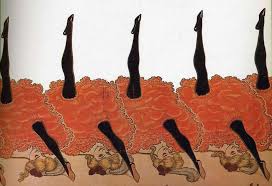
by Sally Norton. Published in the September/October 2016 issue of Finery.
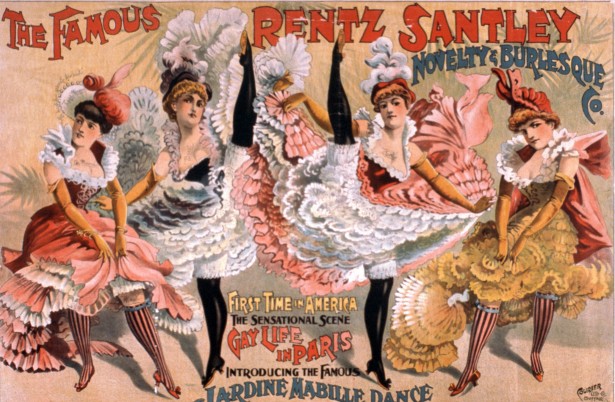
In the late 19th century Paris was a large, urbane city, but the neighborhood of Montmartre retained a village atmosphere; festivities and artists mixed, with pleasure and beauty as their values. In 1886, Edouard Marchand conceived a new entertainment for the Follies Bergere, the music hall revue. On 6 October 1889, the Moulin Rouge opened in the Jardin de Paris. In both venues, women were the center of the entertainment. Nicknamed “The First Palace of Women” the Moulin Rouge cabaret quickly became a great success.
Joseph Oller and Charles Zidler were formidable businessmen who understood the public’s tastes. Their aim for the Moulin Rouge was to allow the very rich to come and ‘slum’ in bohemian Montmartre. The aura of the wealthy, Bourgeoisie men in top hats sitting at a table alongside painters, poets, locals added to the allure of the Bohemian ambiance.
The extravagant setting – the garden was adorned with a gigantic elephant – allowed people from all walks of life to mix. Workers, residents of the Place Blanche, artists, the middle classes, businessmen, elegant women and foreigners passing through Paris mixed and dined and danced. Festive champagne evenings where people danced and were entertained thanks to amusing acts that changed regularly became the successful formula.
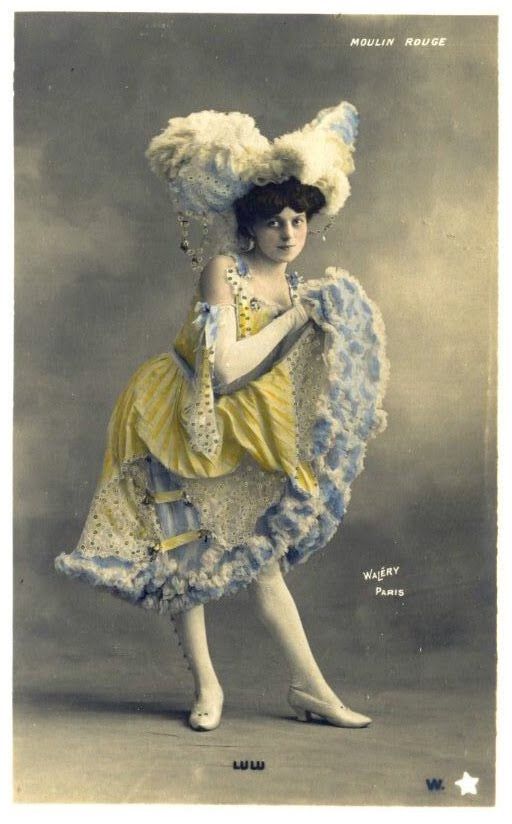
A new dance, inspired by the quadrille, becomes more and more popular. The Can-Can, danced to a furious rhythm by dancers in titillating costumes, along with frivolous screaming, rowdy and boisterous rhythm, exposure of panties and legs – it was a heady and irresistible combination. The dance was loved by many for its free-spirited and unruly nature and in two years’ time, it spread across the Channel onto stages in London’s West End and cabaret clubs.
The Naughty Nineties in London embraced the art of Aubrey Beardsley and the witty plays of Oscar Wilde. Edwardian musical comedy began in the 1890s and captured the optimism, energy and good humor of the new century. The stage productions were noted for frothy, glittering costumes, songs with cheerful melodies; light comic tunes sung by glamorous leading ladies and gentlemen with a line of chorus girls known as Gaiety Girls.
In Paris, Art Nouveau was on display throughout the city in art, architecture, décor and fashion. With its emphasis on elegance and curved line, it was associated with the feminine ideal. On stage, the ideal was a brunette with thick wavy hair, dark eyes, a pale complexion, a sweet face and dainty charm and grace.
The 1890s merged seamlessly with the early 1900s in an age of extravagance and style, appropriately called la Belle Epoque, an era renown for beautiful and talented women. It was also an era of shrewd business women.
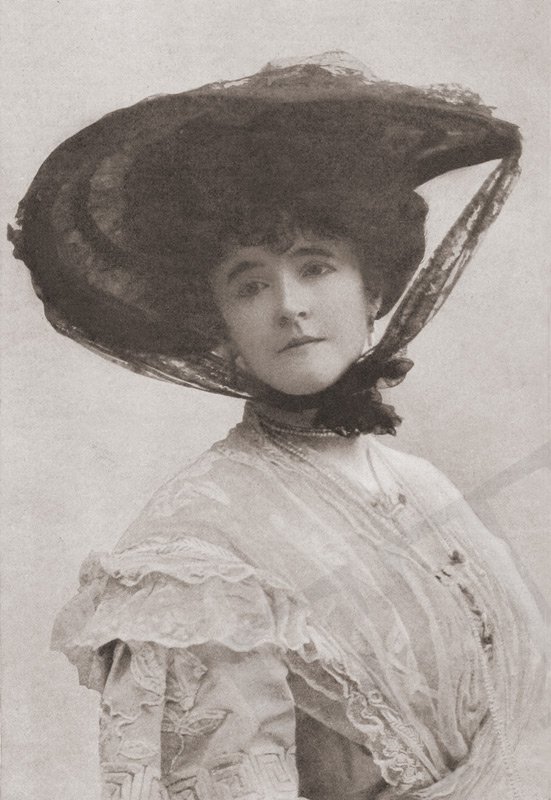
After her divorce in 1890, Lucy Christiana Sutherland found herself penniless and with a child. She began a dressmaking business from her home. In 1894, she moved her business to a shop in London naming it Maison Lucile. She designed the costumes for Lily Elsie in The Merry Widow and recognized in the young actress the perfect face to promote her fashions. Other theatrical clientele soon followed and Lucile became the fashionable dressmaker to theatre beauties in Britain, France and America.
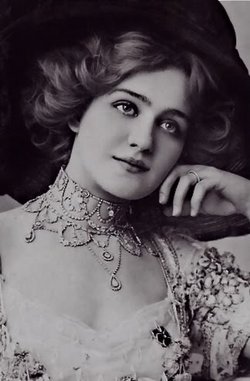
Lily Elsie was photographed on and off stage wearing gowns by Lucile. The improvements in photography opened an entirely new business in postcards of theatre stars. Lily Elsie was at the forefront of popularity, but was soon joined by Amy Evans, Mabel Russell, Gabrielle Ray, Marie George, Decima Moore and Anna Held
These wonderful photographs are a record of the extravagant costumes: layer upon layer of sheer, pleated flounced fabric in the skirts, extravagant beading with rhinestones and sequins on the bodice and sleeves, and pounds of feathers in boas, on hats, in huge fans and decorating coats and capes. The emphasis in the costume design is a small waist, a full bosom and shapely legs.
CanCan dancers at the Moulin Rouge and Follies Bergere showed of lovely legs in colored tights and laced boots. Singers in musical comedies on the London stage wore enormous hats and often posed with staffs decorated with ribbons, flowers and vines. Looking through postcards of Edwardian theatre beauties, admiring (envying) the lavish costumes, one mood permeates these photos – that is, a sense of joyousness. Vive la France!
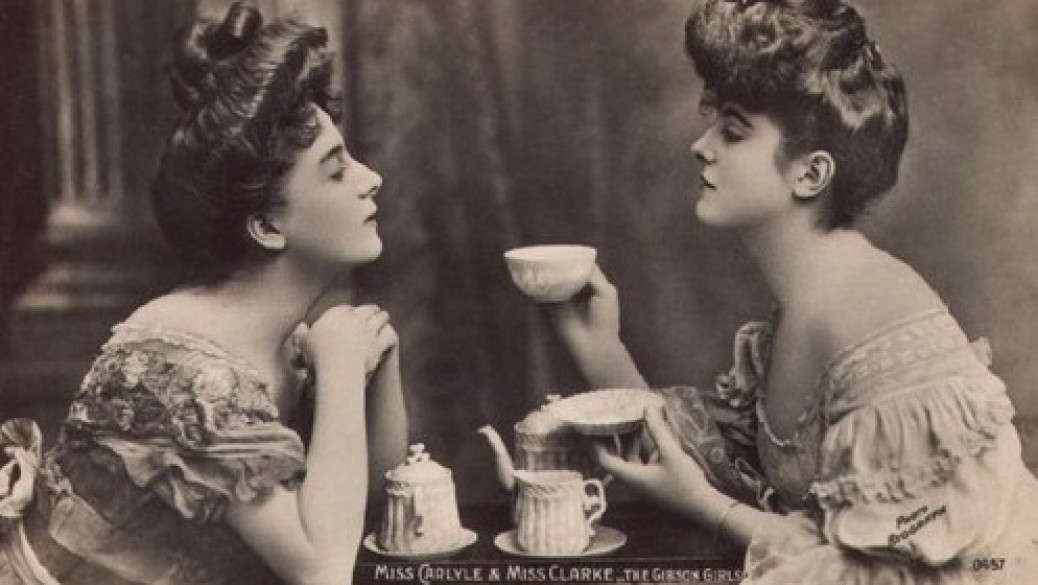
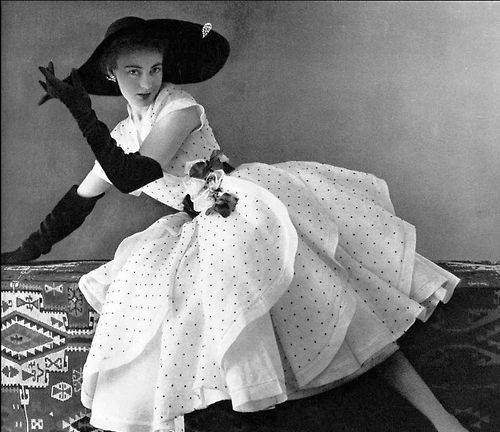
Leave a comment